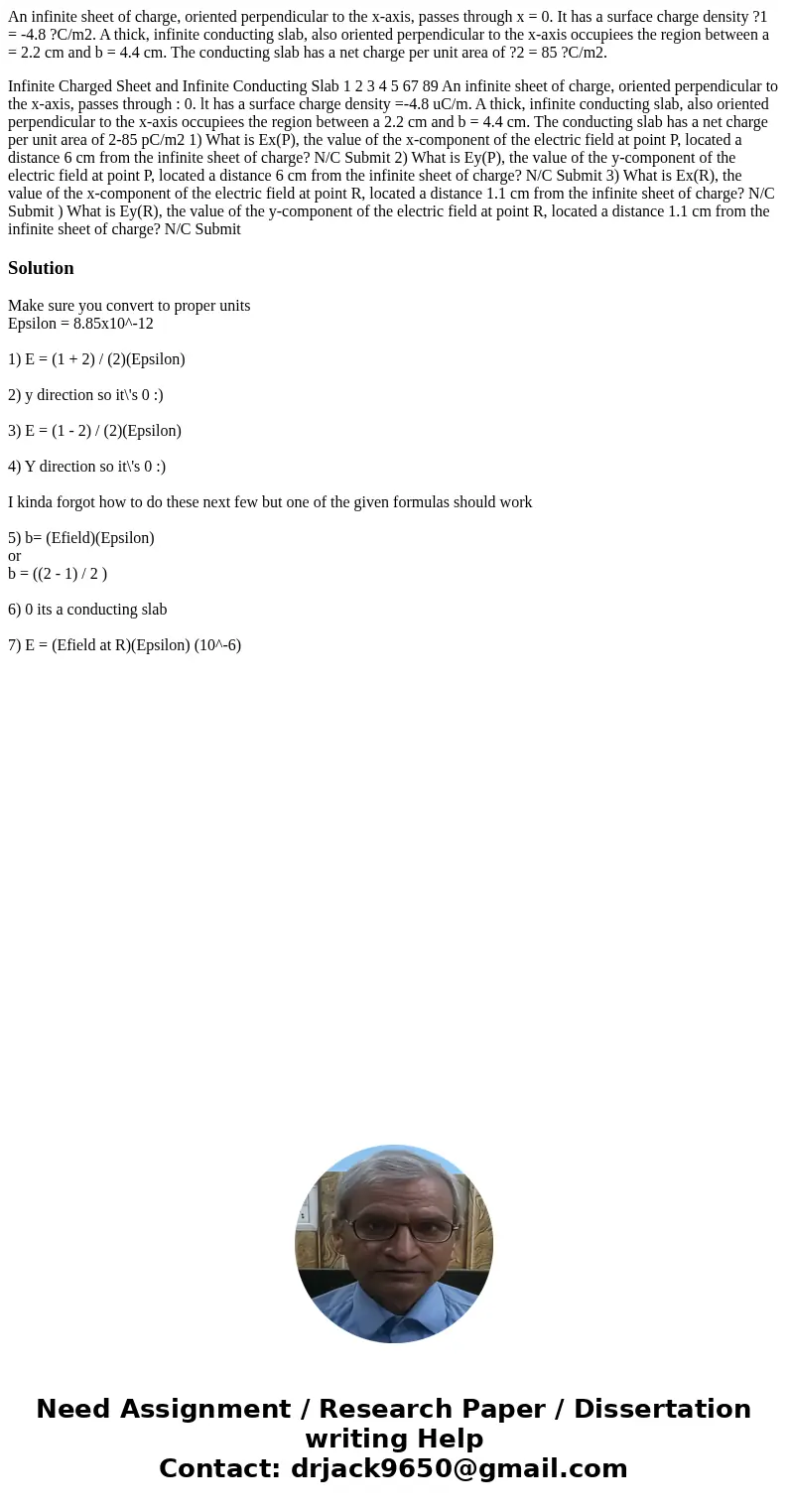An infinite sheet of charge oriented perpendicular to the xa
An infinite sheet of charge, oriented perpendicular to the x-axis, passes through x = 0. It has a surface charge density ?1 = -4.8 ?C/m2. A thick, infinite conducting slab, also oriented perpendicular to the x-axis occupiees the region between a = 2.2 cm and b = 4.4 cm. The conducting slab has a net charge per unit area of ?2 = 85 ?C/m2.
Infinite Charged Sheet and Infinite Conducting Slab 1 2 3 4 5 67 89 An infinite sheet of charge, oriented perpendicular to the x-axis, passes through : 0. lt has a surface charge density =-4.8 uC/m. A thick, infinite conducting slab, also oriented perpendicular to the x-axis occupiees the region between a 2.2 cm and b = 4.4 cm. The conducting slab has a net charge per unit area of 2-85 pC/m2 1) What is Ex(P), the value of the x-component of the electric field at point P, located a distance 6 cm from the infinite sheet of charge? N/C Submit 2) What is Ey(P), the value of the y-component of the electric field at point P, located a distance 6 cm from the infinite sheet of charge? N/C Submit 3) What is Ex(R), the value of the x-component of the electric field at point R, located a distance 1.1 cm from the infinite sheet of charge? N/C Submit ) What is Ey(R), the value of the y-component of the electric field at point R, located a distance 1.1 cm from the infinite sheet of charge? N/C SubmitSolution
Make sure you convert to proper units
Epsilon = 8.85x10^-12
1) E = (1 + 2) / (2)(Epsilon)
2) y direction so it\'s 0 :)
3) E = (1 - 2) / (2)(Epsilon)
4) Y direction so it\'s 0 :)
I kinda forgot how to do these next few but one of the given formulas should work
5) b= (Efield)(Epsilon)
or
b = ((2 - 1) / 2 )
6) 0 its a conducting slab
7) E = (Efield at R)(Epsilon) (10^-6)

 Homework Sourse
Homework Sourse